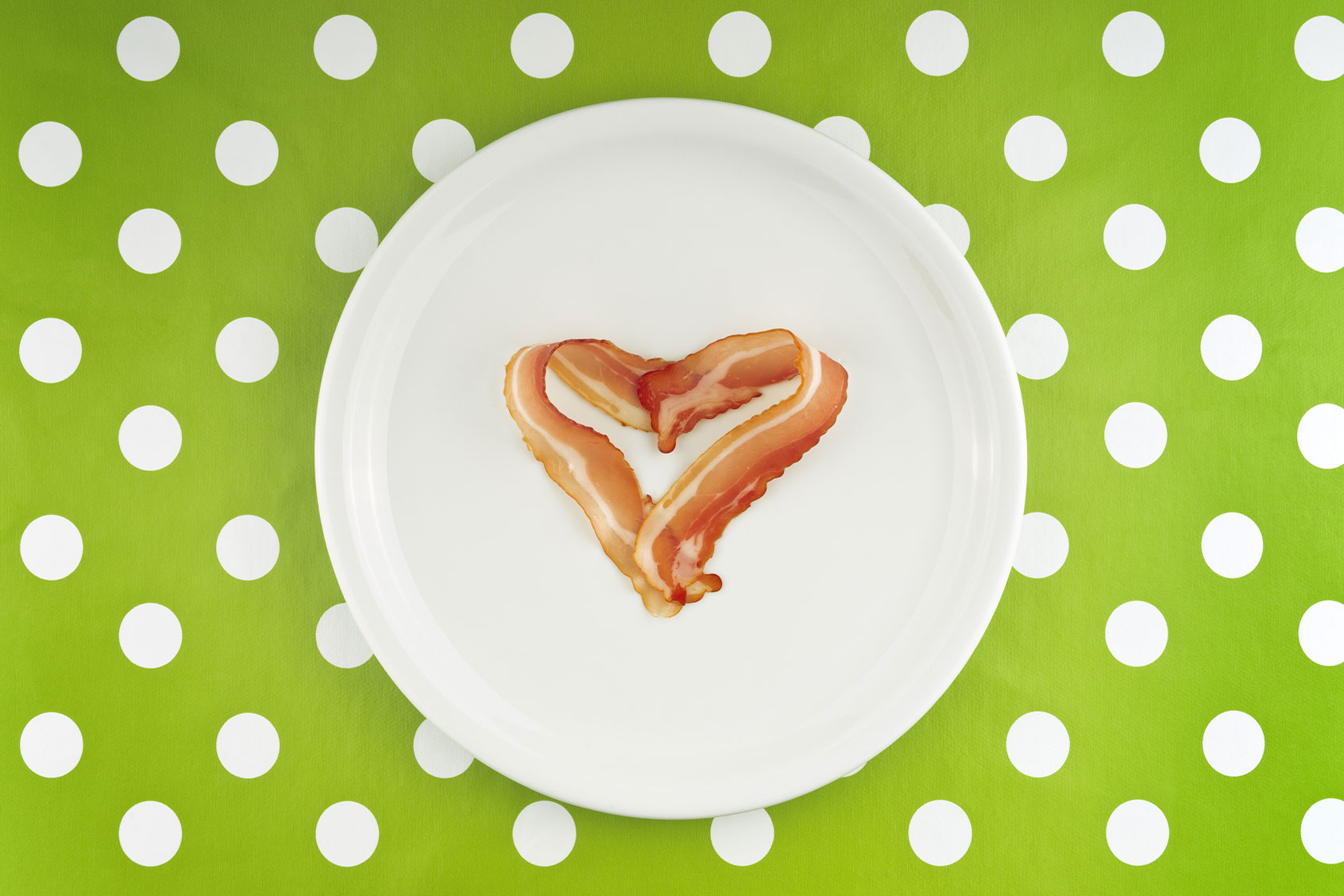It’s no secret that bacon — America’s must-have breakfast staple — continues to dominate both our cravings and wildest food dreams. Take it from television host and celebrity food expert Padma Lakshmi, who shared online that the smell of cooked bacon was enough to send her “whole household into a frenzy.”
“My dog has a look in her eyes I don’t think I’ve ever seen before,” she added. “I think we were all bacon deprived and didn’t know it??”
I cooked bacon today, which I don't do often, and the smell is sending my whole household into a frenzy. My dog has a look in her eyes I don't think I've ever seen before. I think we were all bacon deprived and didn't know it??
— Padma Lakshmi (@PadmaLakshmi) January 23, 2023
Indeed we were, especially as bacon made its resurgence in the culinary scene in recent years. People simply couldn’t resist the umami and, at times, sweet flavor of salt-cured pork. And they surely couldn’t resist incorporating bacon in every meal possible, whether that’s simple eggs and toast for breakfast, a BLT sandwich for lunch or maple-bacon crunch ice cream for dessert.
There’s also leftover bacon fat, better known as “liquid gold.” When handled properly, the liquid can be used to coat roasted potatoes or incorporated as a base in salmon chowder, as Salon’s Michael La Corte wrote.
Simply put, bacon is a go-to meal, a hearty on-the-go snack, an excellent savory topping and a major money maker in food service. These traits, alongside bacon’s delicious taste, ultimately fueled the “bacon mania” of the 2010s, when bacon ceased to exist as a stand-alone ingredient on the plate.
“While most food trends tend to trickle down from the gourmet market into the mouths of mass consumers, that wasn’t the case with bacon,” wrote Bloomberg Business Week’s David Sax. “‘Bacon mania’ was sparked not in the kitchens of fancy restaurants in New York or Chicago, but in the pork industry’s humble marketing offices in Iowa.”
Amid the 1980s and early 1990s, consumers refrained from eating bacon or other processed pork products due to anti-fat and anti-nitrate scares. In response, the industry launched the “Pork: The Other White Meat” campaign in hopes that consumers would purchase more pork products and abandon the misconception that pork was just a “fatty protein.” They also pushed for more lean cuts of meat, specifically chops and tenderloins, which, in turn, caused the price of fattier cuts to drop significantly.
This fueled the “Bacon Makes It Better” campaign that specifically targeted restaurateurs to add more bacon into their menus. The initiative was a big hit amongst chefs and cooks nationwide, mainly because bacon flaunted a lengthy shelf life. Consumers also expressed a newfound love for bacon and by 2006, the trend began to grow in popularity via recipes, Internet memes and pork-themed paraphernalia. Cue the beginning of “I Love Bacon” T-shirts, bacon scented lip balms and “Epic Bacon” humor, which is now a cringey slang associated with peak millennial meme culture.
Like most trends, however, the bacon trend soon lost its “cool” factor and became a thing of mockery, scorn and embarrassment. As Bon Appétit’s Ali Francis explained, “By the late 2010s, ordering any novelty bacon dish felt kind of embarrassing—like accidentally wearing your Teenage Dirtbag tee on a coffee run or unironically writing ‘loves a Cronut’ in your Hinge profile.”
“Did people still eat bacon post-mania? Of course. But did they want to be seen scarfing a maple bacon sundae from Denny’s? Probably not,” Francis continued. “That’s in part because, when big brands jump on any trend, it can begin to feel icky and lose its ‘cool’ status. Meat evangelism was also becoming culturally taboo, juxtaposed with increasingly urgent climate change.”
Both veganism and vegetarianism became increasingly mainstream in the mid-to-late 2010s as more people grew conscious of the effects a meat-heavy diet had (and continues to have) on the environment. Per a 2010 report from United Nations Environment Programme’s (UNEP), “A substantial reduction of impacts would only be possible with a substantial worldwide diet change, away from animal products.” Bacon consumption soon dipped in the following years, according to findings from market and consumer data company Statista — 63.33 million Americans consumed one pound of bacon in 2011 compared to 63.54 million in 2012, 61.99 million in 2013 and 61.85 million in 2014.
Want more great food writing and recipes? Subscribe to Salon Food’s newsletter, The Bite.
Those numbers rose in 2018, when 65.02 million Americans consumed one pound of bacon and 66.31 million consumed two pounds of bacon. Today, there’s still an upward trend of bacon consumption as a whopping 67.49 million Americans consumed one pound of bacon in 2020.
Bacon mania may be considered “cheugy” or cringey now, but enjoying bacon is quite the opposite. Restaurants are still serving up an assortment of bacon dishes for consumers to enjoy. Take for example the Las Vegas-based bacon-themed joint Bacon Nation, which offers bacon breakfast platters, Bacon Poutine, Apple Bacon Coffee Cake and more, or the lauded North Carolina doughnut shop Duck Donuts, where their Bacon in the Sun and Maple Bacon doughnuts are fan favorites.
“The new era of bacon is far more low-key. It’s a satisfying salad topper and a luxe side dish at brunch,” wrote Francis. “It might be unfashionable to be outwardly hyped on bacon these days, but diners are still ordering it en masse.”
“Bacon isn’t a personality anymore. It’s just… bacon.”
Read more
about bacon hacks and recipes:

